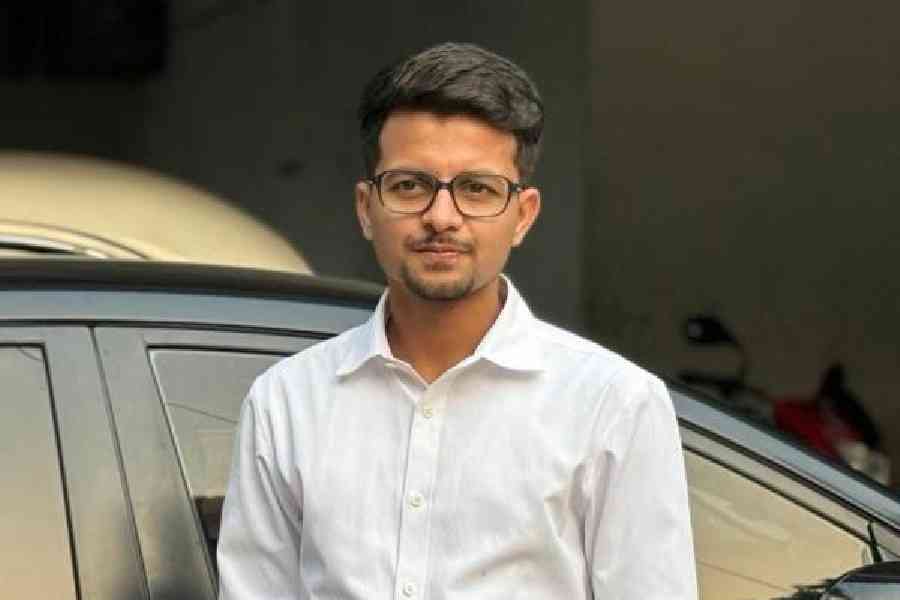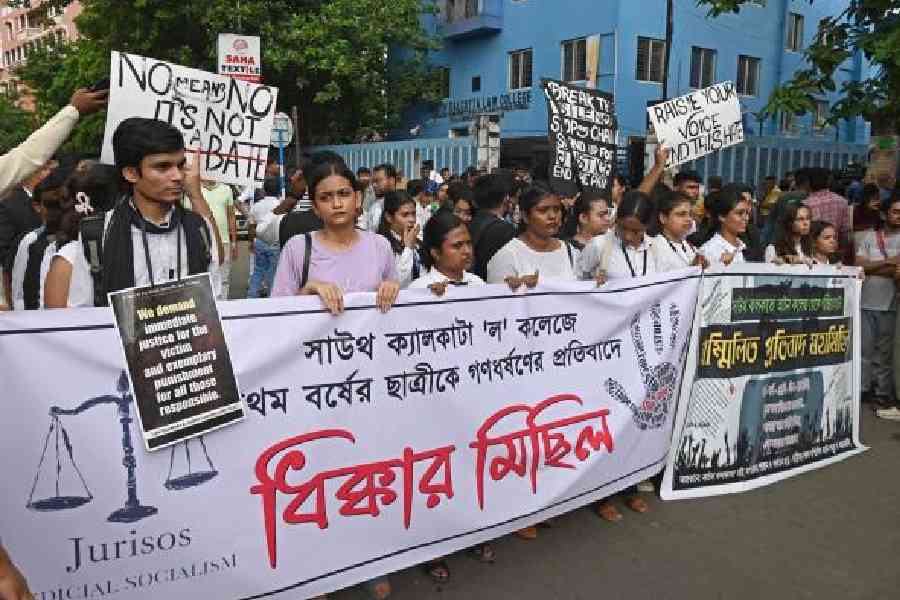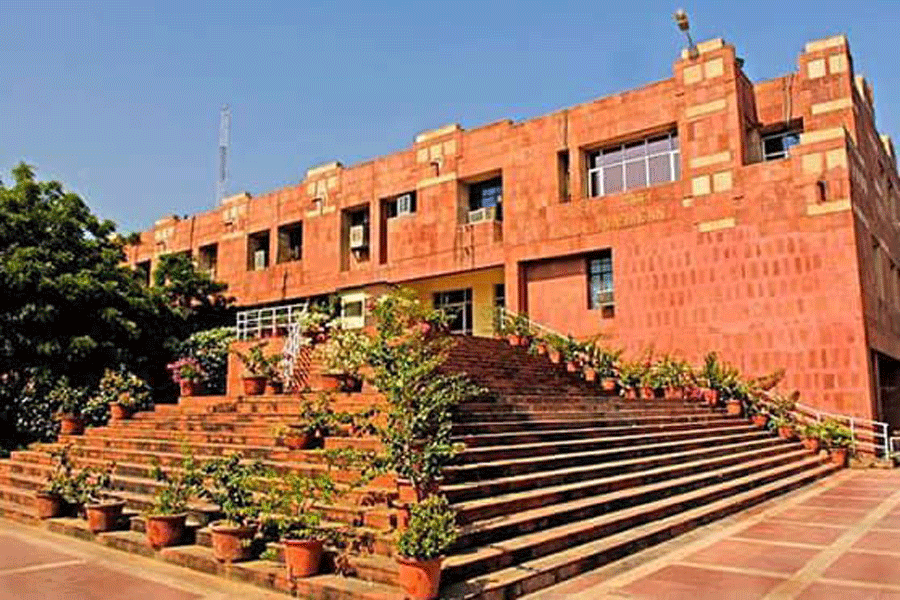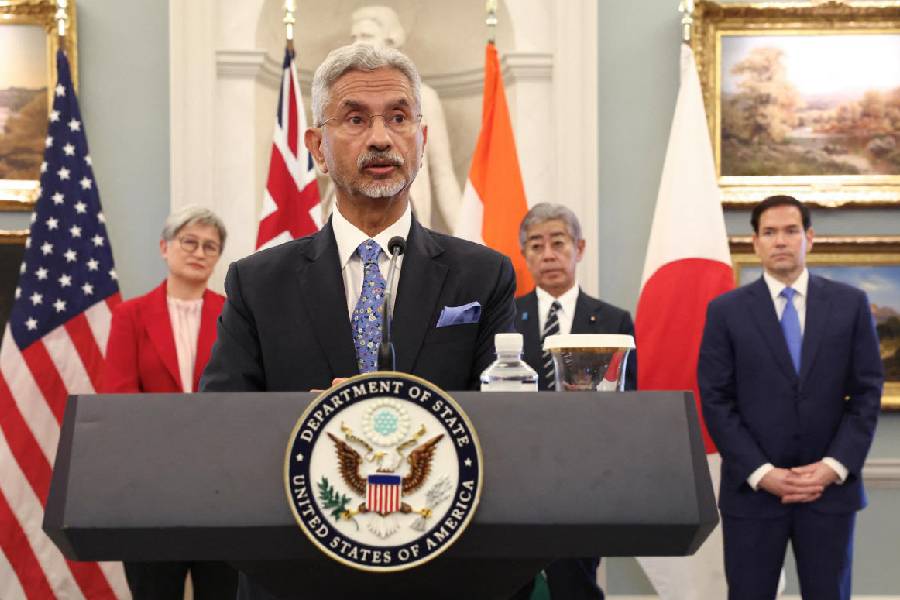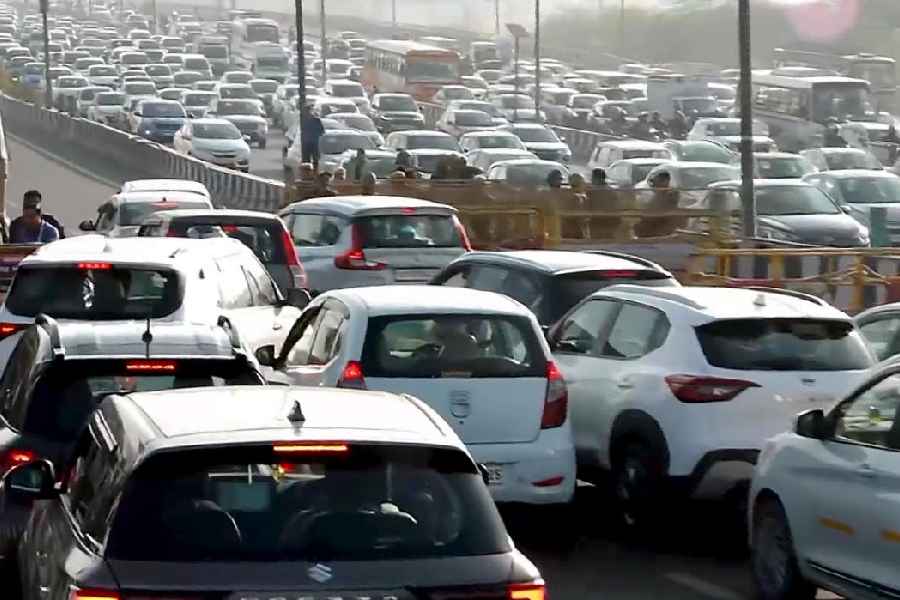 |
 |
 |
| Different forms of Assamese theatre. Pictures by S.H. Patgiri |
In spite of various impediments, amateur theatre in Assam, with its aim of making the audience think, has carved a niche for itself
In India ? and in Assam for that matter ? there has been an unbroken chain of theatrical activities since time immemorial. While classical Sanskrit drama was confined primarily to the royal families and the upper classes of society, there were various forms of folk plays and dances performed and enjoyed by the masses.
Such popular dramatic institutions in Assam date back to Srimanta Sankardev (1449-1569), the great poet-playwright, whose plays were called Ankiya Nats and their performances known as Bhaona. These plays and many others composed on their model continued to enjoy immense popularity among all sections of the people till the middle of the 19th century when a new kind of drama appeared on the scene in the wake of Western influence.
The new drama, which began with a social tragedy titled Ram Navami Natak (1857) by Gunabhiram Barua, though modelled largely on Western style and technique, derived its subject matter mainly from indigenous sources. During the last one century and a half, modern Assamese drama and theatre have developed almost along identical lines with other parts of the country, particularly Bengal. While the 19th century playwrights concentrated on writing mythological plays, comedies and farces, the 20th century opened with the historical plays of Padmanath Gohainbarua, Lakshminath Bezbarua and a few others, which showed the unmistakable influence of Shakespeare and Girishchandra and Dwijendralal of nearby Bengal, in style and technique and also in the overall spirit of patriotism and nationalism.
From World War II, the country?s Independence till the seventies, Assamese drama was primarily of the realistic mode, adapted to the proscenium stage. Jyotiprasad Agarwalla (1903-1951), who was the founder of modern social realistic play in Assamese, was still the chief source of inspiration. His masterpiece, Karengar Ligiri (The Palace Maid, 1937), a social play, influenced Assamese playwrights for decades and is still unparalleled in technique, characterisation and effective employment of dialogue. The Ibsenian- Shavian type of drama which Jyotiprasad had introduced in Assamese had so much of impact on Assamese drama and theatre that the period between the fifties and the seventies saw a host of playwrights writing and producing plays mostly along these lines.
Some changes, however, became gradually noticeable in playwrights like Satyaprasad Barua, Himendra Kumar Borthakur, Arun Sarma and a few others who tried to experiment primarily in the light of new developments in the West. In plays like Nayika Natyakar, Mrinal Mahi by Satyaprasad, Bagh by Borthakur and Ahaar or Shri Nibaran Bhattacharyya by Arun Sarma, attempts were made to experiment with different techniques, including the use of the choric form, symbolism and the absurd. In these plays and many others that followed, the emphasis was mainly on dialogue and employment of methods aimed at minimising the importance of proscenium in an attempt to bring about a closer rapport with the audience.
Broadly speaking, there are three main streams of theatrical performance in Assam?s Brahmaputra valley regions. One of these is Bhaona, that is, performance of the plays of Sankardev and Madhavdev. Another includes the performances presented by mobile theatre groups on professional lines, mainly during the winter months.
Since the primary aim of the mobile or Bhryamyaman theatre groups is entertainment, they use all kinds of theatrical methods, including cinematic methods, in their attempt to attract as many people as possible. The subject matter includes romantic, historical, social, mythological, fantastic and what not ? which can catch the fancy of the various sections of audience. Thus, one positive contribution the mobile theatre has made is to bring drama closer to the people like it was during the earlier times.
The third stream of dramatic activities which is of greater significance and which makes up the sum total of what may be called serious thought provoking and, at the same time, is entertaining drama. This stream consists of amateur theatre groups, which exist in Assam in considerable numbers, although all of them are not equally active. Not to speak of major urban centres like Guwahati, Dibrugarh, Jorhat, Tezpur, Sivasagar, Golaghat, Lakhimpur and Nalbari, there are amateur theatre groups in smaller towns and even in rural areas, who are quite active in their dramatic endeavours.
From the many plays presented by the amateurs from time to time, certain clear-cut features emerge. Amateur groups and individual theatre persons associated with such troupes, prefer to present plays which, besides providing entertainment, contain socially relevant messages. Playwright-directors like Dulal Roy, Munin Bhuyan, Ali Haider, Baharul Islam, Rafikul Hussain, to name only a few, have written and directed plays which can be said to belong to this category.
There is an increasing tendency to use methods and techniques of indigenous folk plays, which not only infuse into plays a sense of Indianness but also make them socially meaningful. There is also a strong tendency to do away with proscenium as far as possible and break the wall separating the stage from the auditorium.
As a corollary to these tendencies, there has been encouraging audience response to original, translated and adapted plays presented through unconventional methods like Brechtian epic theatre technique and even open stage methods. Examples of such ventures, among others, are Munin Bhuyan?s Maa, which was successfully performed in a number of places, including Guwahati, Dibrugarh and Sivasagar; and Nyayanishtha, which was presented even in school halls and university classrooms. Street plays, open-air acting, or theatre in the round performances also seem to be quite appealing to viewers. Some younger artistes, most of whom are graduates from the National School of Drama, are seen making all kinds of experiments with an eye to innovations, never straying however, from drama?s basic functions of providing entertainment and conveying a message or at least making the audience think.
During the last two-and-a-half decades or so the socio-political situation in Assam has been far from favourable for any out-of-doors creative and artistic activities. Since dramatic performances take place in the evening, a comparatively peaceful atmosphere is needed, undisturbed by erratic power supply, so that people can move about freely after dusk. This is unfortunately not always the case in this part of the country, as a result of which theatrepersons have either to curtain their programmes or adjust them precariously to the situation obtaining at a given time.


